Search
Search Results
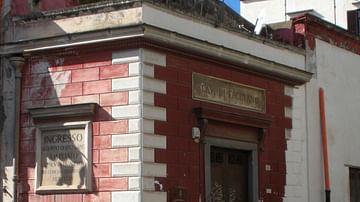
Image
Entrance to the Underground Theatre of Herculaneum
The ancient theatre of Herculaneum was first discovered in 1709 by a farmer who was digging a well and was later excavated by tunnelling down through the volcanic rock. The theatre was built of stone in the Augustan period (27 BCE – 14 CE...
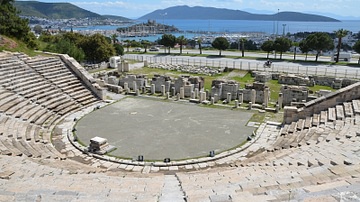
Image
Theatre of Ancient Halicarnassus
The theatre of ancient Halicarnassus, built in the 4th century BCE during the reign of King Mausolos and enlarged in the 2nd century CE, the original capacity of the theatre was 10,000.

Image
Theatre, Delos
The theatre of Delos, c. 300 BCE. The theatre had a capacity for 5,000 spectators and the front row has marble seats with backs for dignitaries.

Video
Elizabethan Theatre, Queen Elizabeth I and William Shakespeare
The term Elizabethan Theatre naturally refers to the style of theatre being composed and performed in England during the reign of Queen Elizabeth I, which continued under her Stuart successors and is best known through the works of the playwright...
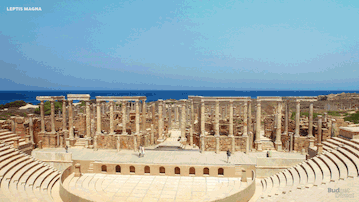
Image
Theatre in Leptis Magna, Reconstructed
This modern reconstruction digitally restores a Roman theatre in Leptis Magna. Located in Khoms, Libya.
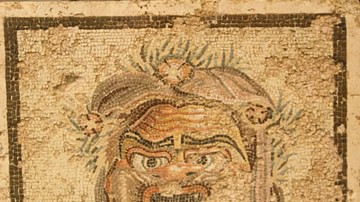
Image
Theatre Mask Mosaic, Empuries
A 1st century BCE Roman floor mosaic emblemata depicting a theatre mask. From a bedroom, domus no.1, Empuries (Emporiae), Spain. (Archaeological Museum, Empuries)
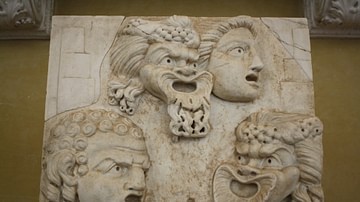
Image
Theatre Masks
A marble relief depicting theatre masks as worn by actors in both Greek and Roman tragedies and comedies. 2nd century CE (Vatican Museums, Rome).
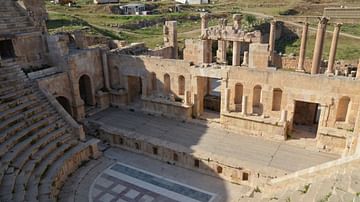
Image
The North Theatre, Jerash
The Roman North Theatre (Odeon) of Jerash (Gerasa), Jordan. 2nd century CE, enlarged in the 3rd century CE.
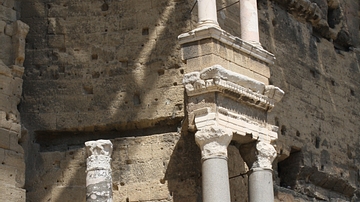
Image
Columns, Orange Theatre Stage Wall Facade
A detail of the facade of the stage wall of the the 1st century CE Roman theatre at Arausio (Orange, France).

Image
Theatre Parodoi, Epidaurus
A view of the parodoi - the monumental gate entrances common to Classical theatres through which the audience entered the theatre.